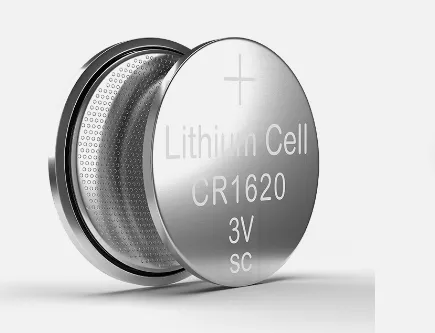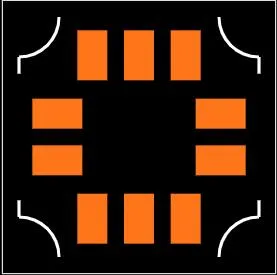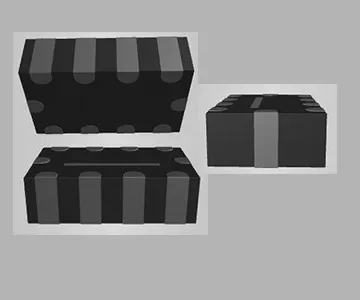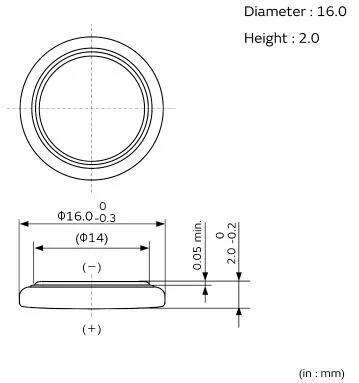Lithium cr1620 Battery:Features, Specification and Applications

The CR1620 battery is a lithium non-rechargeable button/coin cell battery. This passage will delve into the characteristics, uses, technical specifications, and various other facets of the CR1620 battery.
Description of the CR1620 Battery
The CR1620 battery is a non-rechargeable lithium button/coin cell battery widely employed in various devices such as car keys, digital watches, remote controllers, credit-card-sized gadgets, micro-LED flashlights, toys, CMOS/motherboard applications, and similar devices.
Manufactured by numerous reputable battery brands, obtaining a new CR1620 battery should pose no difficulty.
Features of the CR1620 Battery
• Lightweight, High Voltage, and High Energy Density
This battery operates at 3V, nearly double the voltage of standard alkaline or manganese batteries. This enables equipment to function with fewer batteries, maximizing space efficiency and reducing weight.
• Exceptional Discharge Characteristics
Even during prolonged discharge, the voltage remains stable, significantly enhancing the reliability of devices powered by the battery. Such devices require minimal maintenance, with battery replacement seldom necessary.
• Superior Leakage Resistance
Thanks to advanced battery construction and electrolyte formulation, the CR1620 battery boasts exceptional resistance to leakage over an extended period.
• Outstanding Long-Term Reliability
Carefully chosen active materials and electrolytes, combined with Murata's innovative sealing technology, minimize battery self-discharge. At room temperature and normal humidity levels, the annual self-discharge rate is less than 1% of the nominal capacity.
• UL Approval
Murata's Coin Manganese Dioxide Lithium Batteries are UL approved, meeting the standards of UL1642 (File No. MH12566).
• RoHS Compliance
The CR1620 battery complies with the RoHS directive and European regulations, containing no Mercury (Hg), Cadmium (Cd), or Lead (Pb), in accordance with Directive 2006/66/EC and 2013/56/EU.
Applications of the CR1620 Battery
This versatile battery is utilized in a wide array of devices, including watches, computer motherboards, calculators, PDAs, electronic organizers, garage door openers, toys, games, door chimes, pet collars, LED lights, sporting goods, pedometers, calorie counters, stopwatches, and medical devices.
cr1620 CAD Models
Footprint

3D Models

manufacturer of the CR1620 battery
The manufacturer of the CR1620 battery is Murata Manufacturing Co., Ltd., a Japanese company specializing in electronic components. Headquartered in Nagaokakyo, Kyoto, Murata offers a diverse range of electronic products, including communication and wireless modules, as well as power supplies. The company is renowned for its production of lumped components and RF filters, utilizing various processing technologies such as thin-film, thick-film, and LTCC (Low-Temperature Co-fired Ceramics).
cr1620 Dimensions

Specifications
Here are the technical specifications, attributes, parameters, and components with comparable specifications to Murata Electronics CR1620.
| Type | Parameter |
| Factory Lead Time | 15 Weeks |
| Size / Dimension | 0.63Dia x 0.08 H 16.0mmx2.0mm |
| Moisture Sensitivity Level (MSL) | Not Applicable |
| Reach Compliance Code | not_compliant |
| Approval Agency | UL |
| Operating Temperature (Min) | -30°C |
| Terminal Type | BUTTON(-), FLAT(+) |
| Battery Cell Size | Coin 16.0mm |
| Diameter | 16mm |
| RoHS Status | Non-RoHS Compliant |
| Weight | 1.3g |
| Part Status | Active |
| Voltage - Rated | 3V |
| Termination Style | Requires Holder |
| Operating Temperature (Max) | 70°C |
| Storage/Refrigeration Temperature | 50°F~77°F 10°C~25°C |
| Discharge Rate | 100μA |
cr1620 Battery Equivalents
CR1616 vs CR1620 Battery
CR1616 and CR1620 are both non-rechargeable manganese dioxide lithium batteries sharing a diameter of 16.0 mm. However, they differ in height, resulting in variations in capacity and other features such as drain currents:
CR1616 battery: 16.0 x 1.6 mm, with a capacity ranging from 50-55 mAh,
CR1620 battery: 16.0 x 2.0 mm, with a capacity ranging from 65-80 mAh.
While most battery compartments designed for CR1620 batteries can accommodate CR1616 batteries, it is not advisable to substitute a CR1620 with a CR1616 due to the latter's lower capacity and somewhat reduced maximum drain/pulse currents, which may lead to device malfunction.
BR1620 vs LiR1620 vs ML1620 vs CR1620 Battery
BR1620, LiR1620, and ML1620 batteries are uncommon and not widely utilized in everyday applications.
BR1620 battery: A non-rechargeable carbon-monofluoride lithium battery featuring a slightly lower capacity and drain current compared to the CR1620 battery. It has a very low discharge rate and a wider temperature range. Its nominal voltage ranges from 2.8-3.0 volts, with a cutoff voltage of 2.0-2.25 volts, depending on the exact chemistry.
LiR1620 battery: A rechargeable lithium battery with lower capacity than the CR1620 battery but capable of multiple recharges. Its nominal voltage is 3.6-3.7 volts, and not all devices designed for CR1620 batteries support LiR1620 batteries. The LiR1620 battery's self-discharge rate can reach up to 5% per month.
ML1620 battery: A rechargeable lithium manganese dioxide battery with a nominal voltage of 3.0 volts, suitable as a substitute for CR1620 batteries. However, it is rarely used due to lower capacity, stronger self-discharge rates, etc.
Safety Considerations for CR1620 Batteries
CR1620 batteries, like similar small objects (including other button/coin cell batteries), pose a risk of ingestion by children and pets. Consequently, they are often packaged in 'pets-safe' and 'kids-safe' packaging.
Although CR1620 batteries do not contain mercury, cadmium, lead, or other toxic heavy metals, they can cause chemical burns and internal organ damage if ingested. In the event of ingestion, seek immediate medical attention and follow the instructions provided by emergency personnel or medical professionals.
What are Buzzers & How they work?
Exploring Electronic Components(Guide)
Automotive Relays: Types, Advantages & Applications
Human-Machine Interface(HMI) Technology [Explained]
Digital Comparator and Magnitude Comparator Guide
What Low Pass Filter Is and How It works
2SC5200 Transistor:Pinout and Applications
Exploring Electronic Components: Innovations and Applications
Top 10 Common Electronic Components Guide
How to Test Automotive Relays (Guide)










